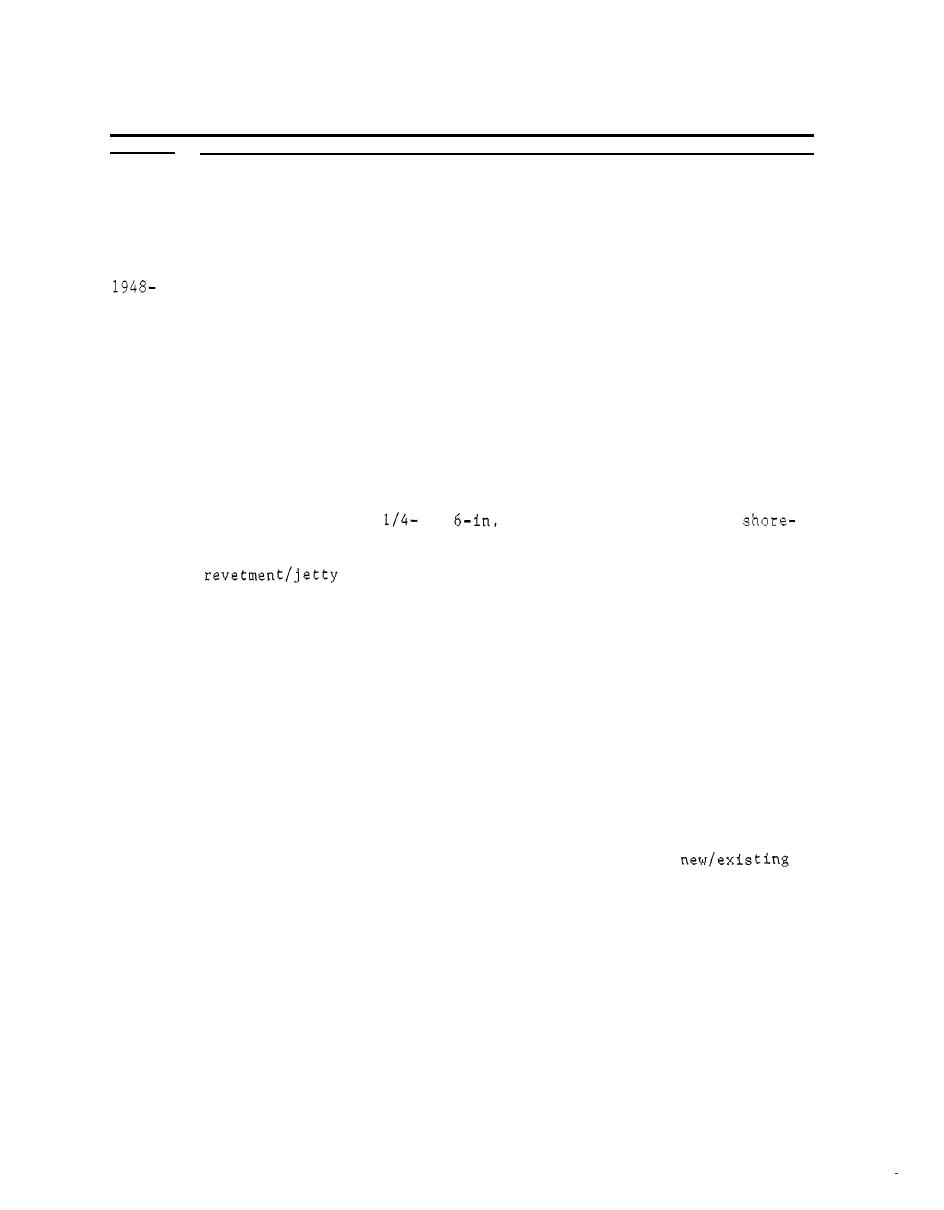
Table 20 (Continued)
Date( s )
Construction and Rehabilitation History
was one reason for the 1934-38 rehabilitation. Examination of the
1945
jetty heads showed that the north jetty, with its asphaltic con-
(Cont)
crete, was in good condition but that the south jetty, without the
asphaltic concrete, had deteriorated and needed 1,000 to 1,500 tons
of 8- to 10-ton stone to restore the original design.
The south jetty was inspected and surveyed. The outer 500 ft of the
1949
cap had settled 1 to 6 in. because of displacement of the underlying
armor stone (occurred during the hurricane of 11-19 September 1947).
On the landward half of the cap were a number of holes resulting
from serious loss of armor stone from wave action. Near the shore-
ward end of the cap, a 40-ft section was cracked badly. By this
time, the nonasphalted head of the jetty had largely disappeared.
There was also some deterioration along a 170-ft section at the
jetty cap revetment interface. Undermining of stone because of wave
action and currents (scouring) was felt to be the major cause of
In January 1950 repairs to the north jetty consisted of (a) placing
1950
to
stone along 200 ft of its
a filter blanket of
side landward junction (to impede sand motion) and (b) placing
existing and additional 500- to 2,000-lb armor stone at the
cap interface (30-ft section).
In March 1950 repair of the south jetty consisted of placing 2- to
10-ton armor stone as needed. Total cost of the repairs to the
south jetty (26,000 tons of stone placed) and revetment was
7,000. (The jetty portion was roughly 90 percent of the total.)
In August 1950 an underwater survey of the asphalt-filled north
jetty showed some deterioration on the channel side; otherwise, it
continued to function properly.
1955
Repairs were made to the north jetty from the existing shoreline to
t . A total of
the landward end of the concrete cap (500 f )
I
1,300 tons of 6-ton minimum capstone was placed on the channel side
of the repair section. Filter layers were placed on the shoreward
(a) 2-ft-thick lower layer
side of the cap as follows (Figure 3 )
of 3- to 6-in. stone placed above, and shoreward of,
armor stone, (b) overlayed with 9 in. of 0.1- to 0.4-in. material,
and (c) covered by a layer of 500- to 4,000-lb riprap stone. Total
cost of the repairs was ,000.
1958
The sand transfer plant began operation. The plant was built to
maintain the net southerly littoral drift in addition to beach
renourishment from dredging.
(Continued)
(Sheet 2 of 3)
60



 Previous Page
Previous Page
